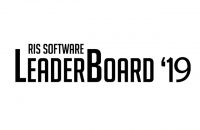3 Big Data Retail Trends Your Business Should Embrace
Smart Supply Chain Management

Mid-sized retailers are right to believe there’s no need for them to keep pace with the Walmarts of the world when they only depend on one warehouse and are only managing between ten and a hundred retail locations – but that doesn’t mean they can’t benefit from taking after them in a few ways. Supply chain management software for multi-location retailers is getting better every day, solving the kinds of problems you encounter once you grow out of the ‘small business’ label.
- Does your current supply chain management solution automatically compile recommended orders for your buying staff based on sales levels, min/max, and seasonalities?
- Can a store running low on stock request a top-up from another location that has a surplus of that item, instead of having to pull from your warehouse?
- Do you always know exactly what product your own and where it is, even when it’s in transit, marked as damaged, or supposed to be on its way from a supplier?
Once you’ve got more than two or three stores, there’s no reason to settle for anything less than those capabilities. You may think you’re getting by just fine on basic supply chain management, but streamlined, highly automated inventory management frees up time for your employees, saves your company money on unsold stock, and allows you to become more flexible and speedy in the products you offer your customers.
Omnichannel Customer Service
Omnichannel is a big buzz word right now, but a lot of mid-sized retailers are scratching their heads and asking “but what does it mean and is it actually that important?” instead of just jumping on the bandwagon. Caution and thoughtful research is a valuable trait in a business owner responsible for potentially dozens of stores and hundreds of employees’ job security! There’s absolutely nothing wrong with wanting to see the proof of value before you invest.
So what is omnichannel all about? To boil it down to its essentials, it’s about being more flexible for your customers and allowing you to say, “absolutely, we can do that” in situations where, traditionally, your infrastructure held you back from being able to offer a service. It means things like being able to place an order for home delivery at the POS just as effective as you’d have been able to do it online, or being able to take orders for pickup in-store from an online portal just as easily as you’d have been able to do it on the phone.
At its core, it means all the pieces of your system are so seamlessly cross-compatible that the roadblocks you’re using to having to navigate (“Sorry, we can’t actually get it delivered to your event directly from the warehouse” or “I wish you could tell the website to ship us the item you wanted to pick up in store, too” or “Yeah, it would be great if you could see online if we had any in stock here, wouldn’t it?”) suddenly become non-issues. We’re already seeing lots of big national retailers offer this kind of excellent service – after a while, shoppers get so used to these capabilities that encountering a lack of them is jarring. Don’t be that frustrating experience that reminds them why they prefer the big store!
Data Crunching (Business Intelligence)
The things you can discover by analyzing your own sales and customer data are absolutely fascinating – you hear ‘big data’ and think about Target’s algorithm for determining women are pregnant or Walmart’s discovery that people buy more pop tarts during hurricane warnings, but business intelligence isn’t just for highly paid teams of data scientists. The premise of scouring your own data for insights that allow you to anticipate instead of just react is one that even mid-sized retails can act on and profit from.
You may not have a team of dedicated analysts, but a good end-to-end retail software solution can do most of the heavy lifting for you, generating the data at the POS, storing it in your customer and transaction history database, and giving you tools to analyze the data yourself, slicing and dicing it to discover what you can. Do you know what assortment of products sells best from location to location? Can you anticipate which items sell best in certain seasons and phase out the ones you know will sell slowly at a certain time of year? Do you understand which types of customers you typically serve at each of your locations? Can you effectively test the popularity of new products? Can you effectively predict in advance which new products will be most successful with your core customers?
Plenty of smart business owners have proved that mid-sized retailers can use business intelligence tools to drive profit, save money, and stock their stores more effectively. Some people claim that data crunching and business intelligence means no longer relying on leadership’s “intuition” – what they’re neglecting is the fact that “intuition” is just a type of analysis that decision makers do by crunching the “data” of their own lifetime of retail experiences and knowledge and making a prediction based on that analysis. Reporting and analytics don’t replace intuition, they sharpen it.
Don’t be afraid to think Big
Big retail can be a dangerous source of inspiration if you get a little too ambitious and try to overcomplicate things for yourself, but the reality is that caution is often the enemy of progress. Involve your software vendors in a consultative role and try to understand what they see as easily applied best practices and proven successes in big retail that can be implemented in your business. Be realistic about costs and make sure you set concrete benchmarks for yourself; understand why you’re looking to imitate something the big guys are doing, and make sure you have a tangible impact on your organization as a clear end goal.
Final Thoughts
Go into it asking for proof, numbers, and examples of how you can be using these kinds of technologies – but go into it with an open mind and an open heart, too. Don’t be afraid to change, because retail is one of the fastest evolving industries and competitive advantage is always in reach for the businesses that can differentiate and outshine the rest of the pack.
RECENT POSTS
 Magstar Ranked Highly in Multiple Top 20 Software Vendor Categories by 2019 RIS News LeaderBoardIt's hard to know when "reaching for the stars" [...]
Magstar Ranked Highly in Multiple Top 20 Software Vendor Categories by 2019 RIS News LeaderBoardIt's hard to know when "reaching for the stars" [...] Retail Data Security BreachesConsumer concerns over data security at retail locations and [...]
Retail Data Security BreachesConsumer concerns over data security at retail locations and [...]- Retailers Are Heading into a Post-Covid Era: 5 Strategies for Managing Stores and Driving Sales in the New Retail LandscapeIt's hard to know when "reaching for the stars" [...]